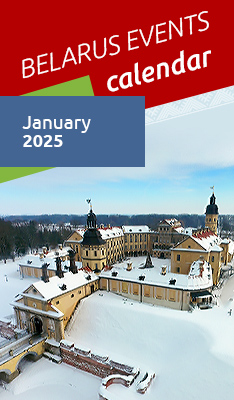Press releases
Mythical tsmok to become tourist brand for Lepel District
VITEBSK, 27 March (BelTA) – A tsmok (a Belarusian dragon) will become a symbol of Lepel District. A mini-project to develop the tourist brand has received financial support as part of the EU program "Water, nature, people at disappearing landscape: sustainable development of rural tourism in Russia and Belarus", BelTA learnt from project manager in Lepel District Olga Makhonenko.
In the Belarusian and Polish mythology, tsmok was the ruler of land and celestial waters. He lived in marshes and lakes, and rainbow was his symbol. The famous Belarusian ethnographer Nikolai Nikiforovsky wrote about tsmoks. They were mentioned by Slavic culture researcher Alexander Afanasyev. But the most detailed description of tsmoks was given in the novel by Vladimir Korotkevich "Christ landed in Grodno". According to Vladimir Korotkevich, the last Belarusian tsmok lived in one of the Lepel lakes.
This is why Lepel District authorities decided to choose this mythology creature as the local tourist brand. Unlike Russian Zmey Gorynych, a typical three-headed dragon, and West European Dragon, the Belarusian tsmok was a much friendlier creature: he did not treat well the drunks, hooligans and loose women, while couples who lived in love and harmony could count on his support.
The sculptural image of Lepel tsmok will fit the description given by Vladimir Korotkevich: a behemoth with a body of a seal, with the head resembling either snake or deer. According to Olga Makhonenko, all necessary documents for the sculpture of the literature character have been coordinated with the Culture Ministry. As expected, the two-meter high sculpture will appear in Lepel in September this year, on the day of the town.
The local authorities are not going to stop at this project. Once the monument is installed, its replication in the form of souvenirs will be made by local craftsmen. The local history museum studied a lot of folklore materials and already created the animated game "Visiting the Tsmok".
The project “People in the disappearing landscape: development of agro-tourism in Belarus and Russia” is aimed at the development of rural tourism and the engagement of local communities. It covers the territory of Lepel District (including the Berezinski Biosphere Reserve) in Belarus, Polessky District (Curonian Spit reserve) of Kaliningrad Oblast, Russia.
The EU allocated more than €500,000 for the project. Funds will be spent on the development of tourist routes, maintaining a network of farmsteads, seminars to exchange experience, internships in the Netherlands. Under the program, each district is expected to create one model agro-eco-farmstead, with other businesses to rely on its experience.
| Su | Mo | Tu | We | Th | Fr | Sa |
|---|---|---|---|---|---|---|








 print version
print version make home page
make home page add to bookmarks
add to bookmarks

